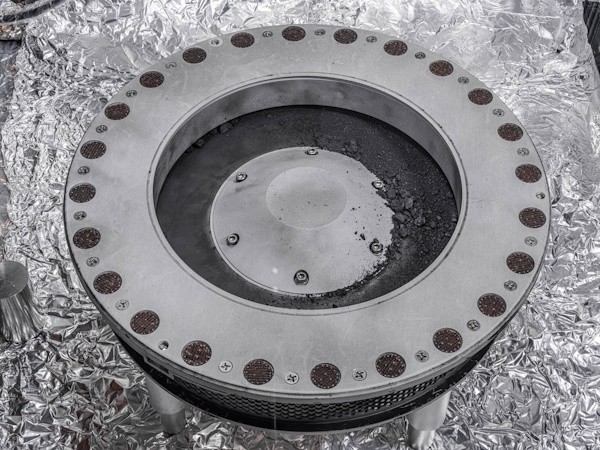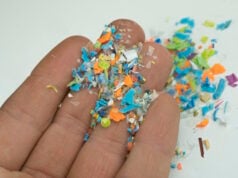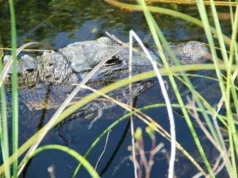
CAPE CANAVERAL, Fla. (AP) — NASA on Wednesday showed off its first asteroid samples delivered last month by a spacecraft — a jumble of black dust and rubble that’s the most ever returned to Earth.
Scientists anticipated getting a cupful but are still unsure how much was grabbed from the carbon-rich asteroid named Bennu, almost 60 million miles (97 million kilometers) away. That’s because the main sample chamber has yet to be opened, officials said during an event at Johnson Space Center in Houston.
“It’s been going slow and meticulous, but the science is already starting,” said the mission’s lead scientist, Dante Lauretta of the University of Arizona.
Black dust and particles were scattered around the outside edge of the internal sample chamber, according to Lauretta. He said there’s still “a whole treasure chest of extraterrestrial material” to be studied. The samples are priceless, the preserved building blocks from the dawn of the solar system.
No one at Wednesday’s celebration at Johnson got to see any of the samples firsthand — just photos and video. The asteroid pieces were behind locked doors in a new lab at the space center, accessible only to scientists in protective gear.
Besides carbon, the asteroid rubble holds water in the form of water-bearing clay minerals, Lauretta and others pointed out.
“That is how we think water got to the Earth,” he said. “Minerals like we’re seeing from Bennu landed on Earth 4 billion years ago to 4.5 billion years ago, making our world habitable.”
Back in 2020, Lauretta and his team lost some of their haul when the lid on the sample container jammed a few days after the spacecraft collected the material. It vacuumed up so many pieces from Bennu that small rocks got lodged under the lid and prevented it from closing, sending pieces floating off into space.
That’s why scientists did not have a precise measurement of what was coming back; they estimated 250 grams, or about a cupful, ahead of the September 24 landing in the Utah desert. They won’t have a good count until the container is opened, within two weeks or so.
Much of the material shown Wednesday was overflow from when the lid was stuck open before everything could be sealed inside the return capsule. The larger visible rocks were under an inch (2.5 centimeters) in size.
“We have a bounty of samples on our hands already and we’re not even inside” the main sample container, said NASA astromaterials curator Francis McCubbin.
NASA has another asteroid-chasing spacecraft on a Florida launch pad, ready to blast off later this week. The destination will be a rare asteroid made of metal named Psyche. No samples will be coming back.











